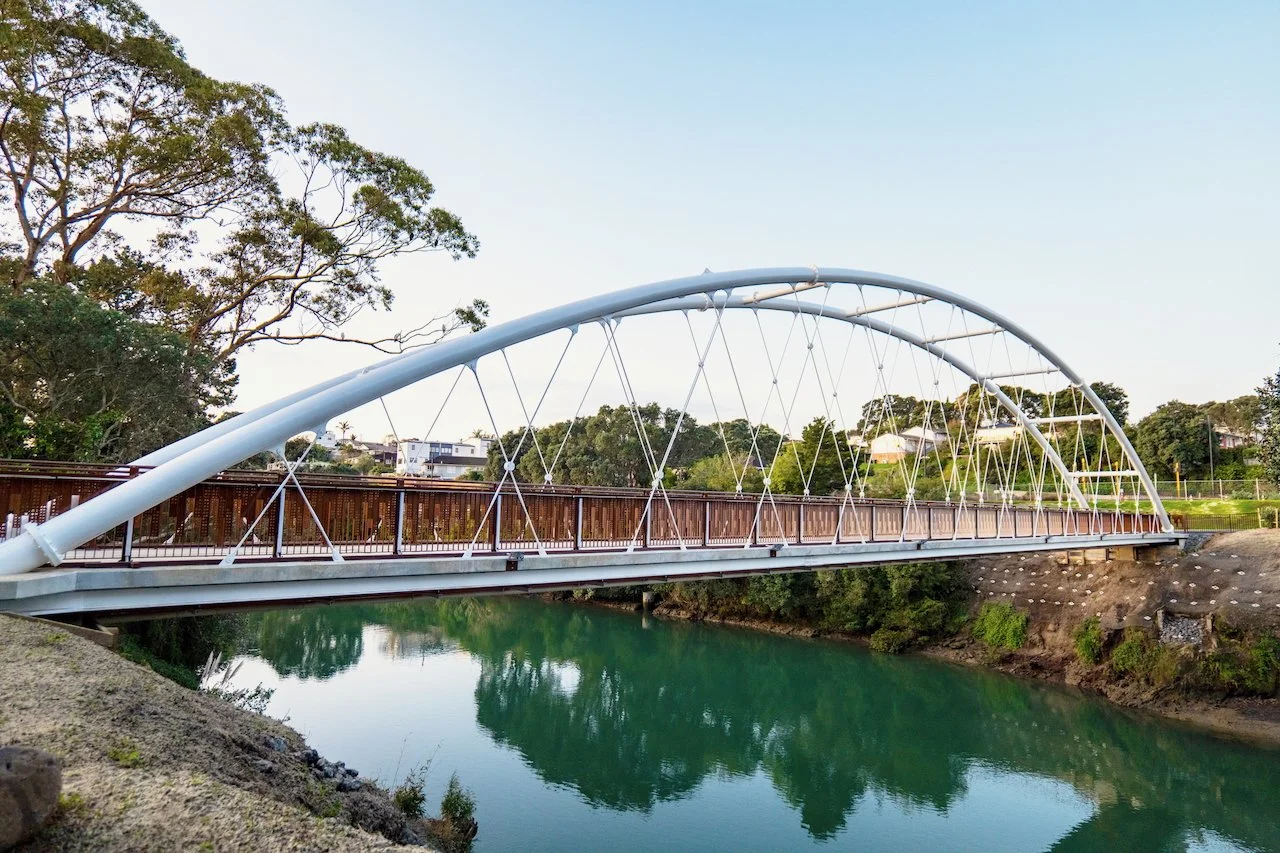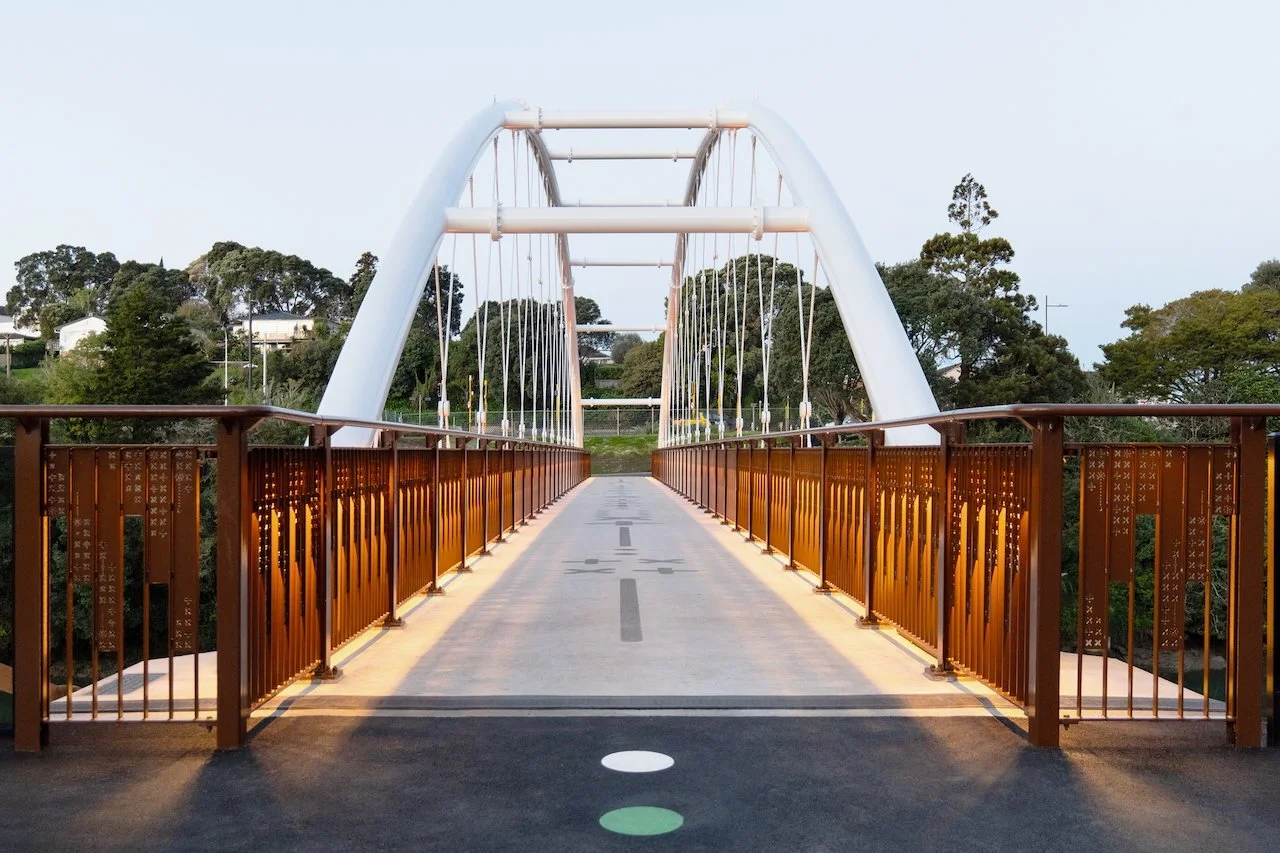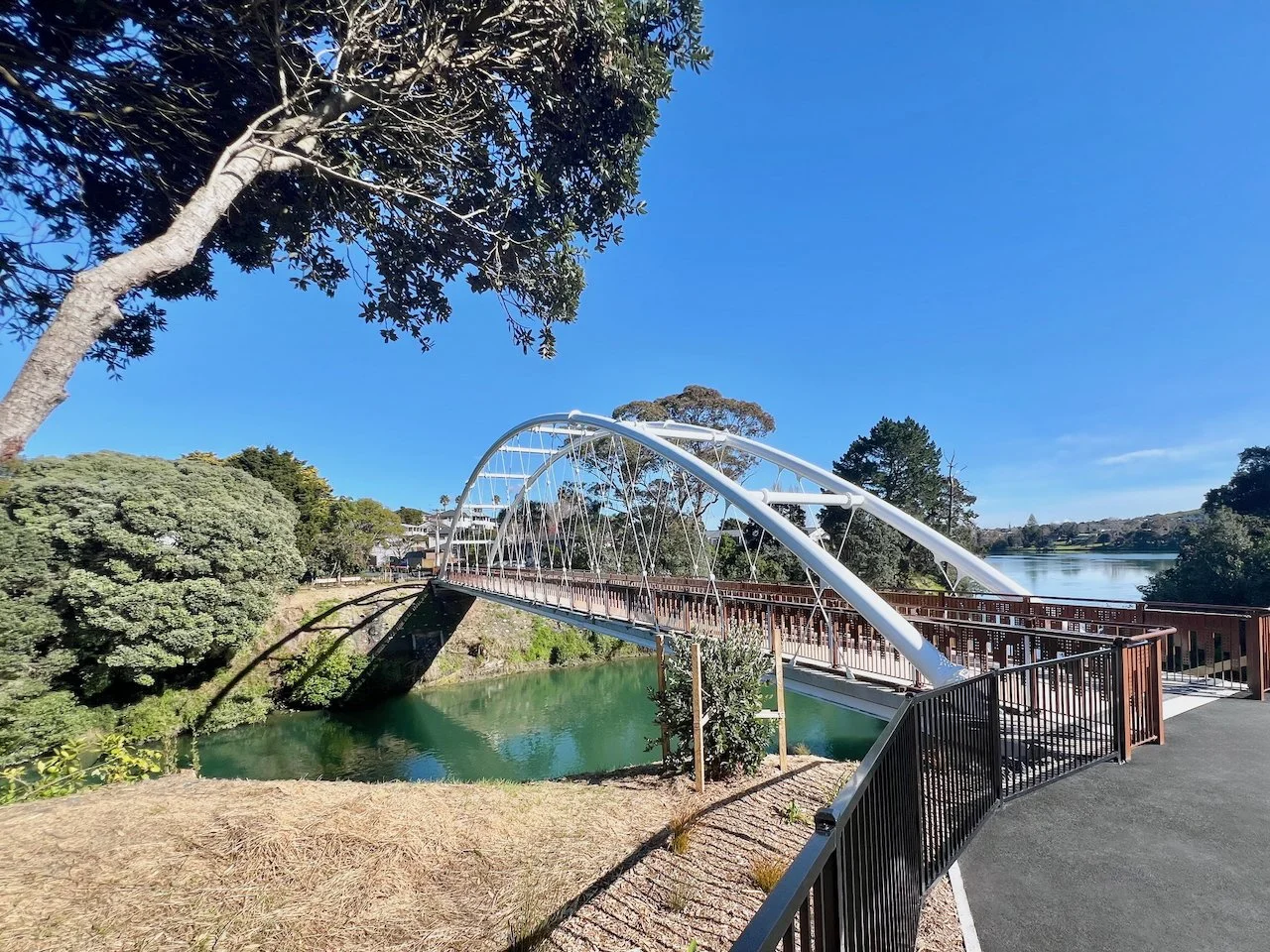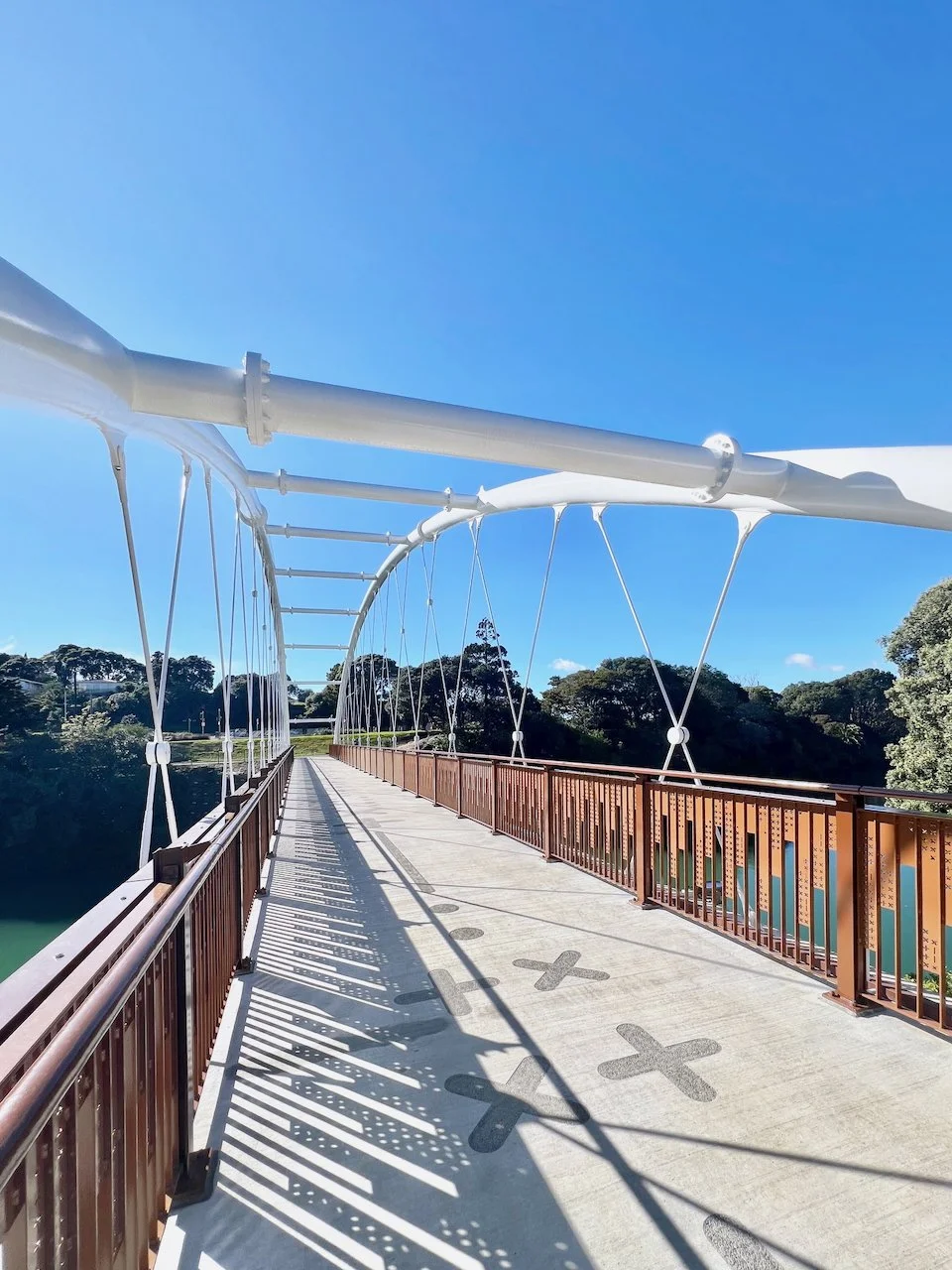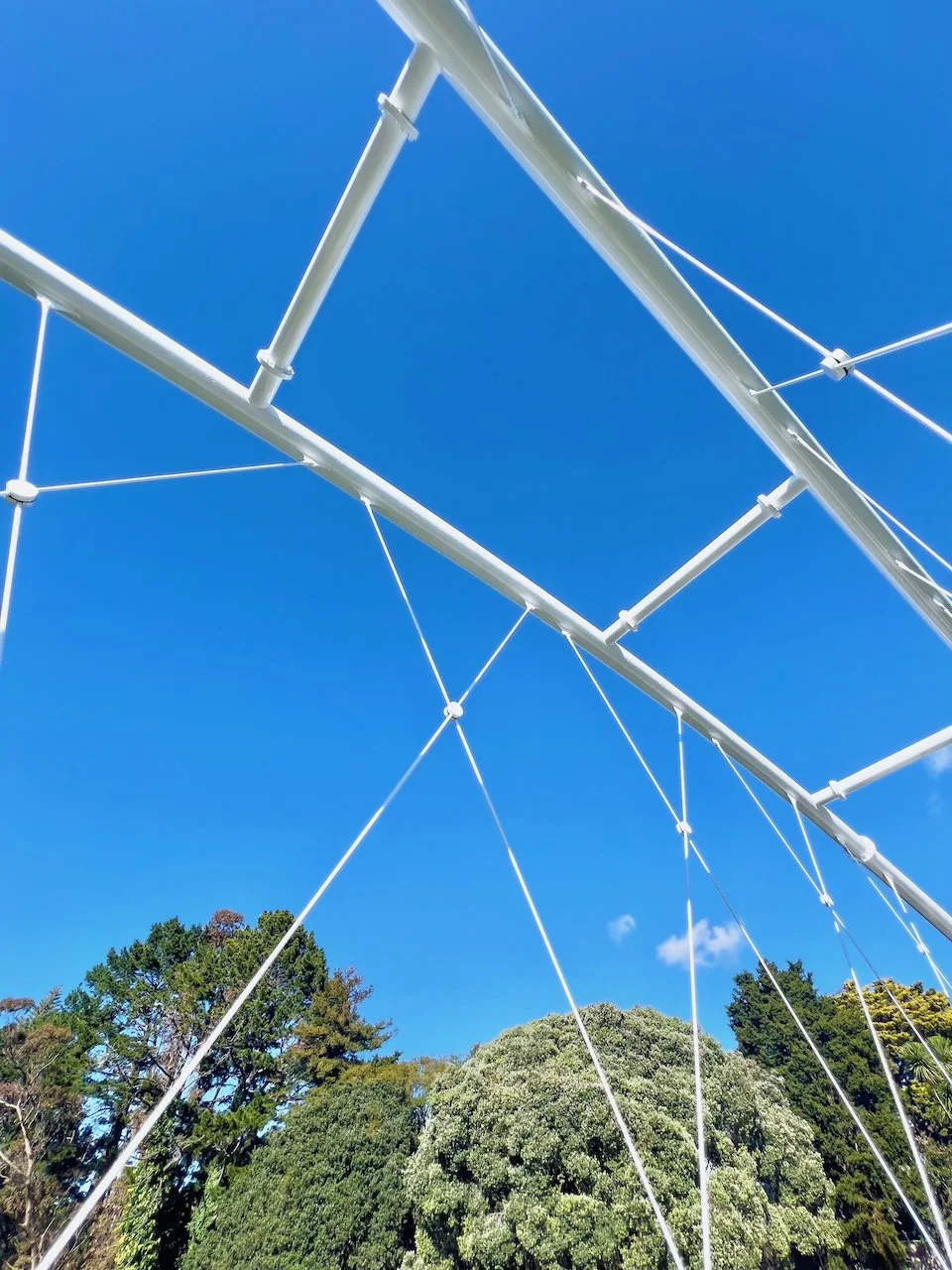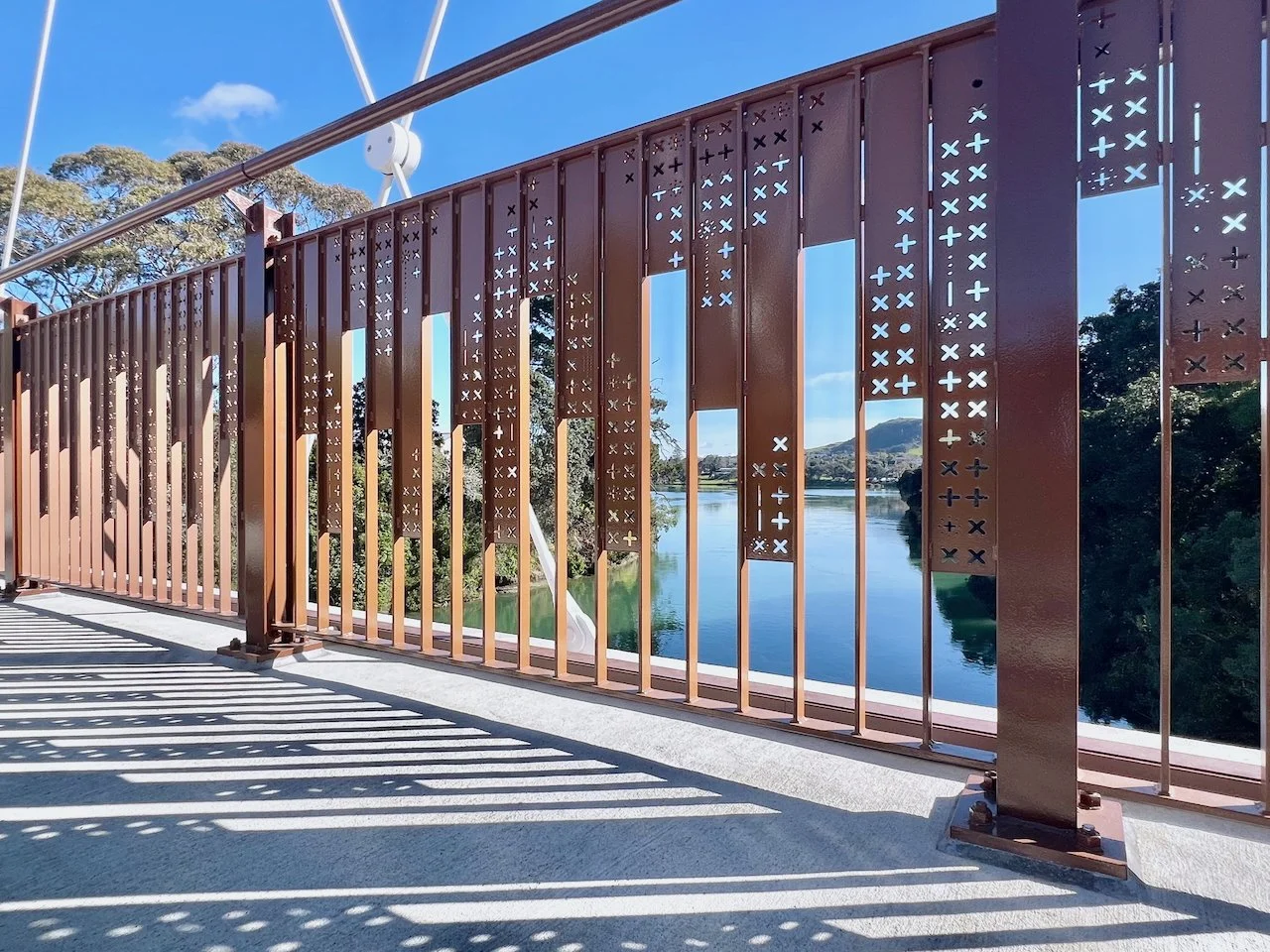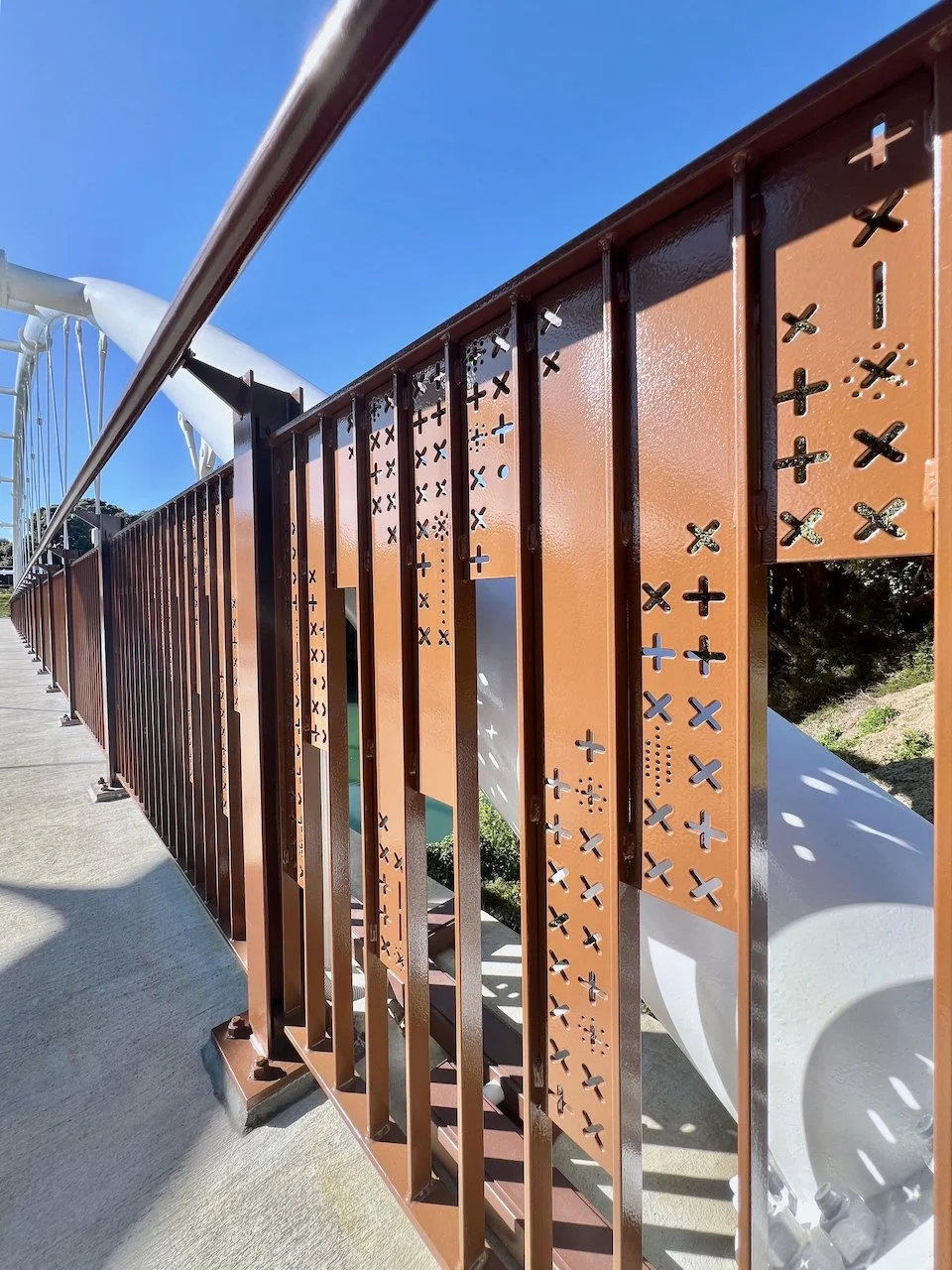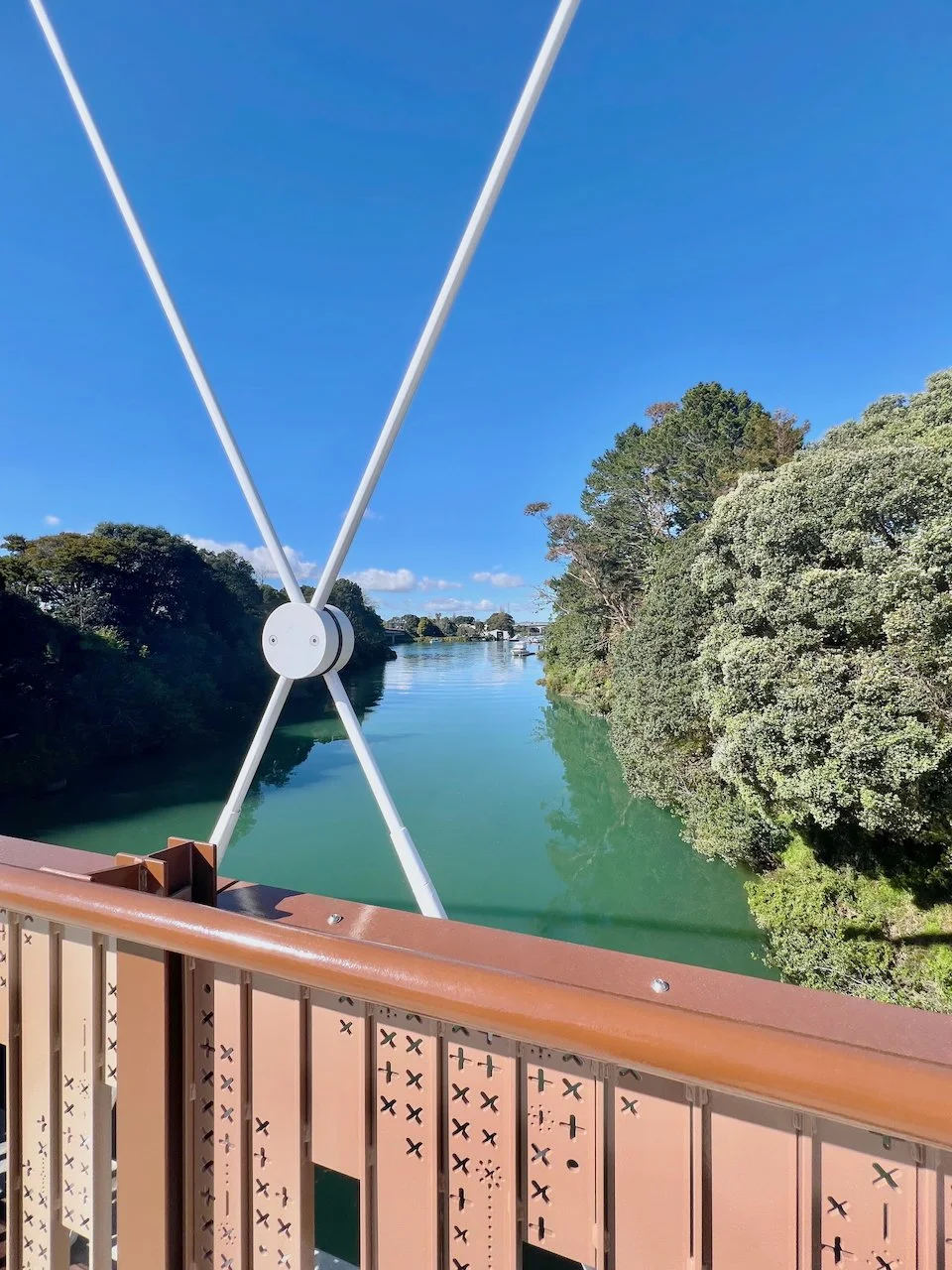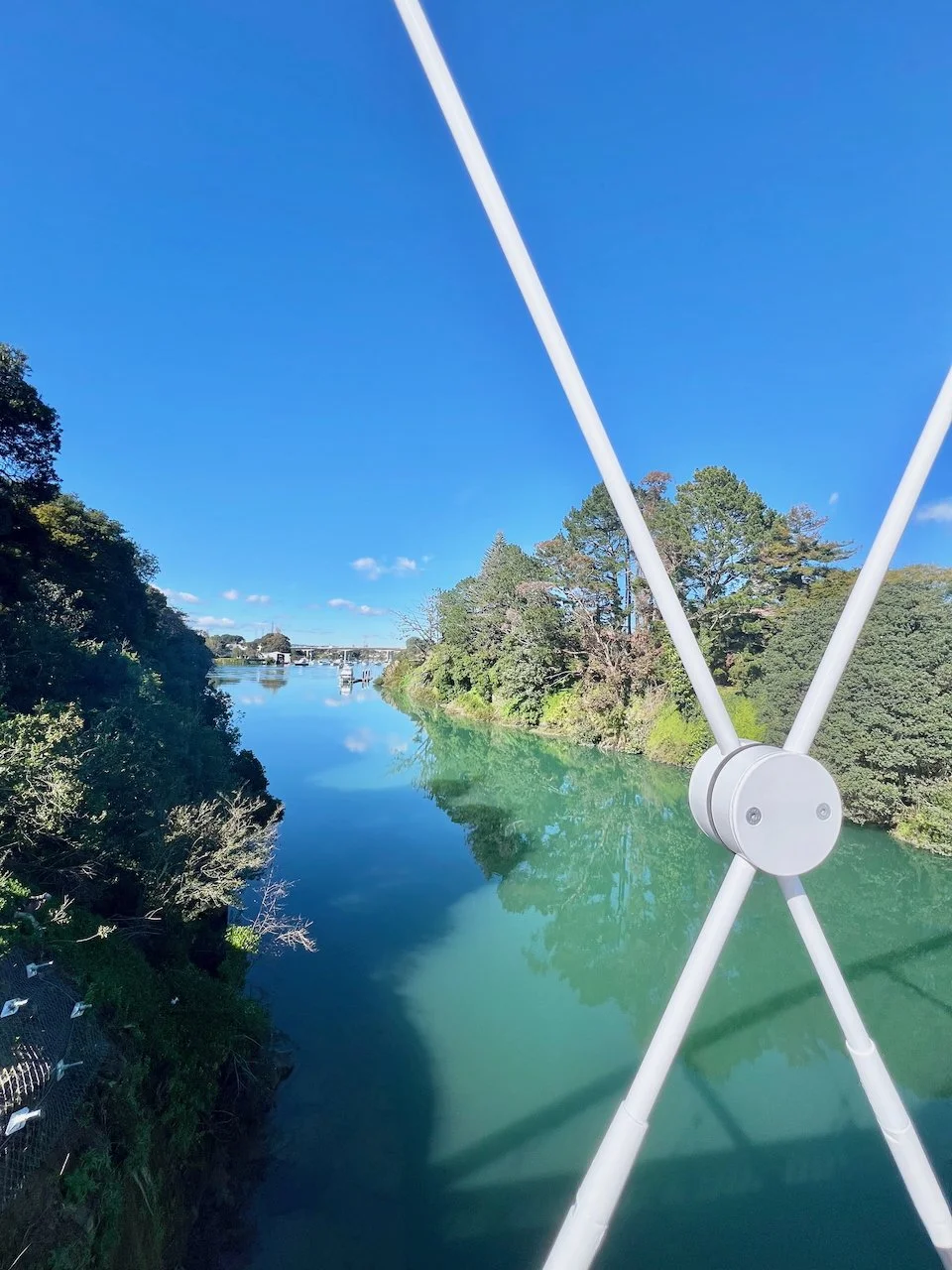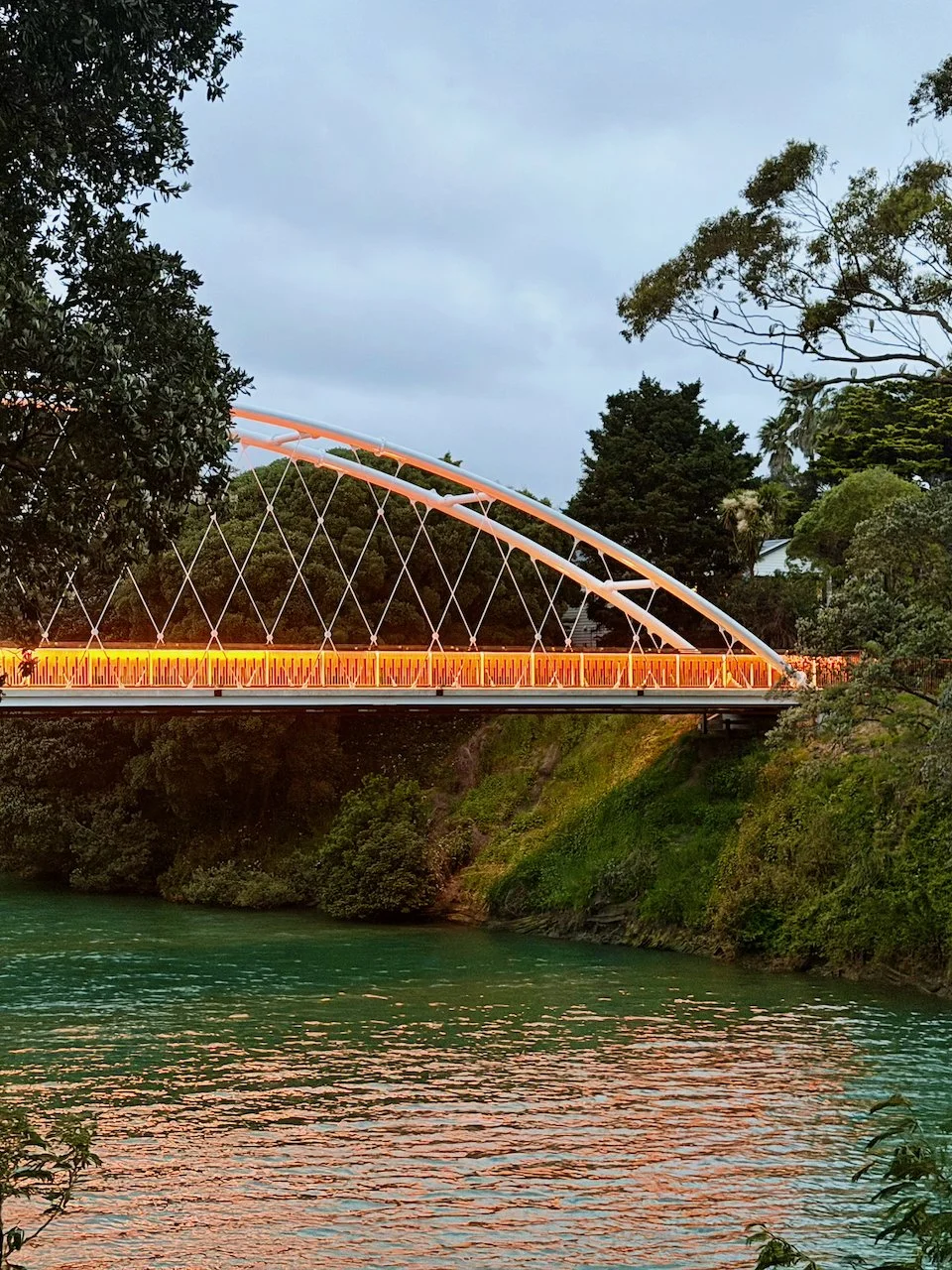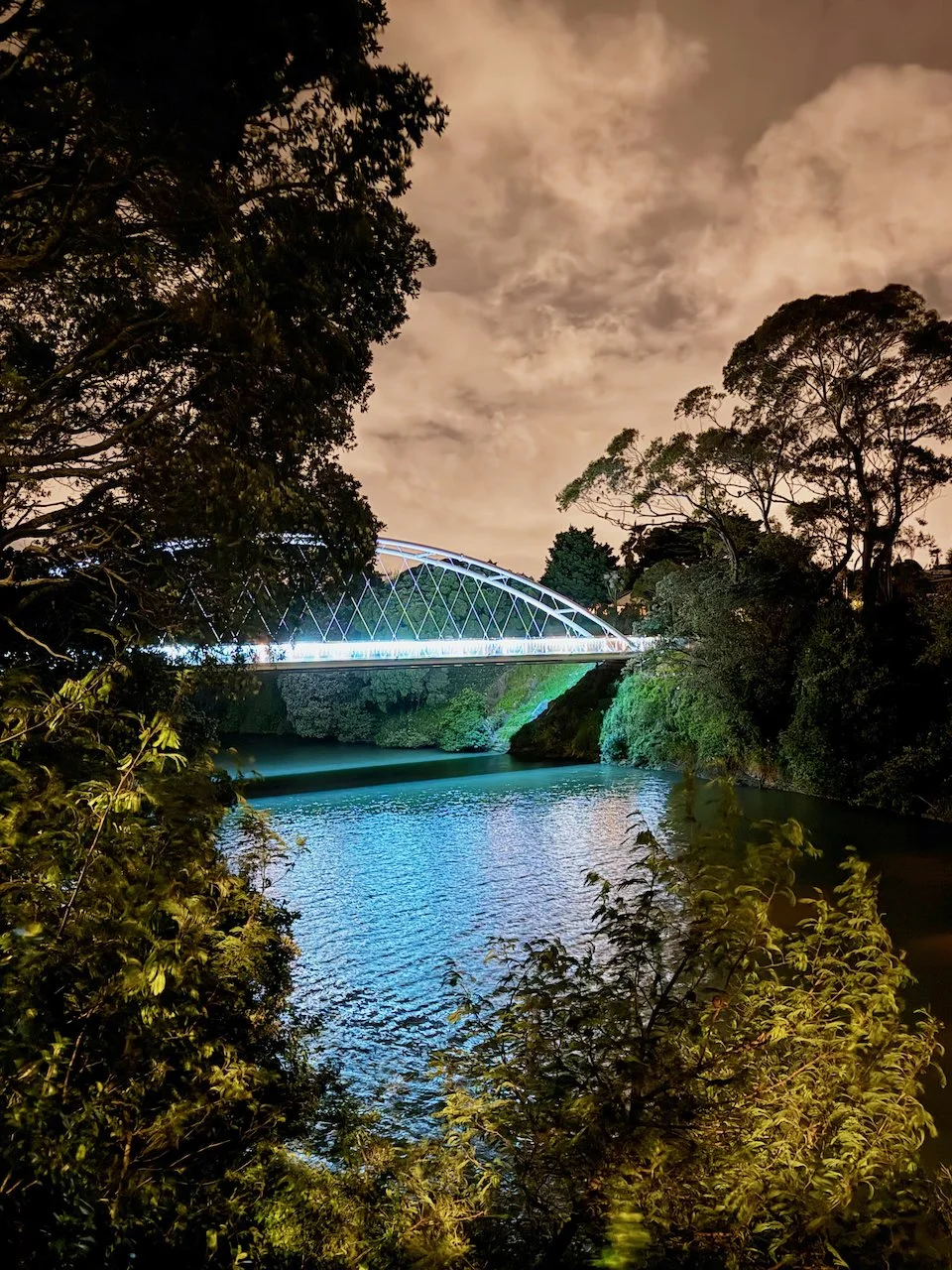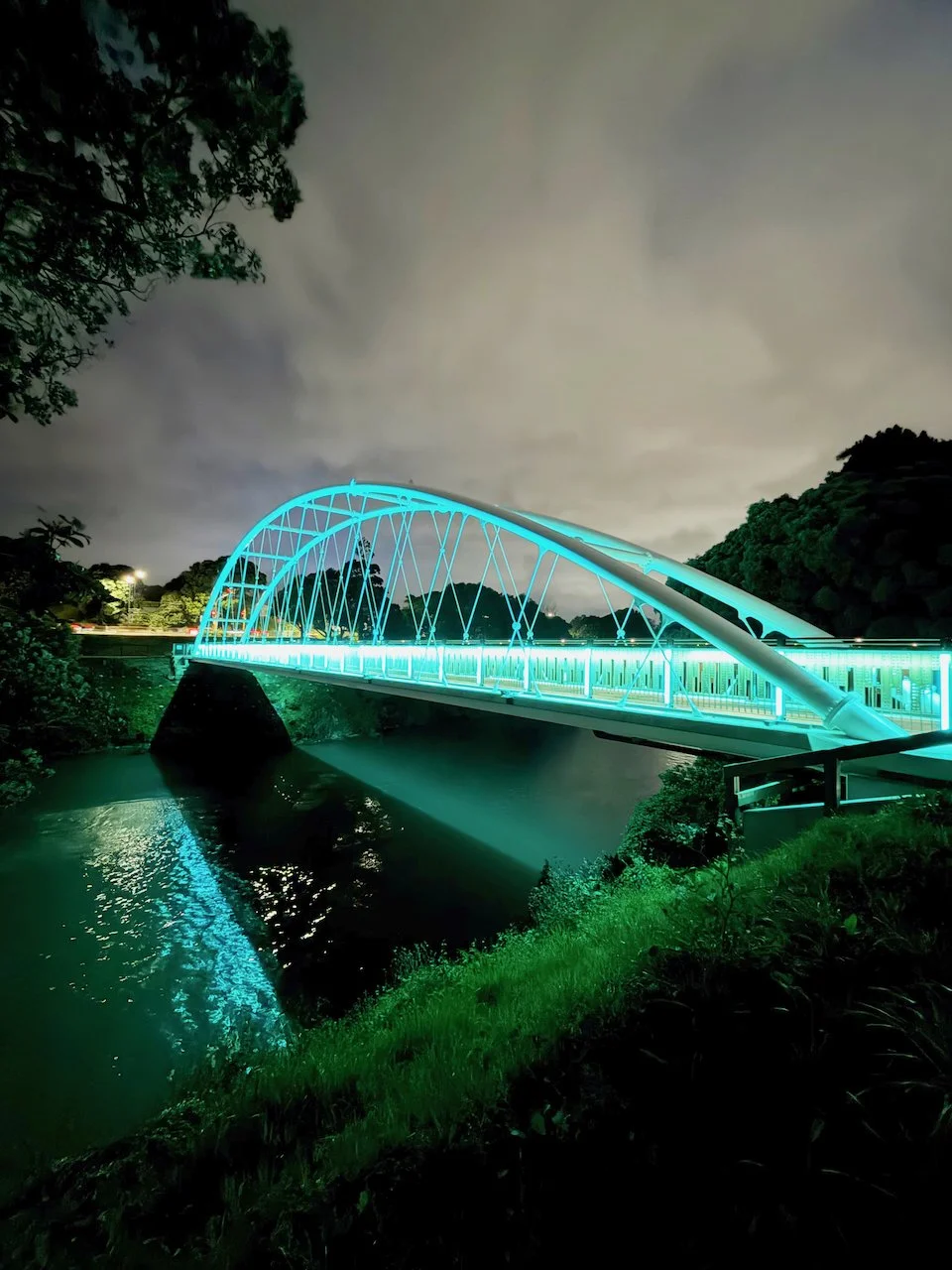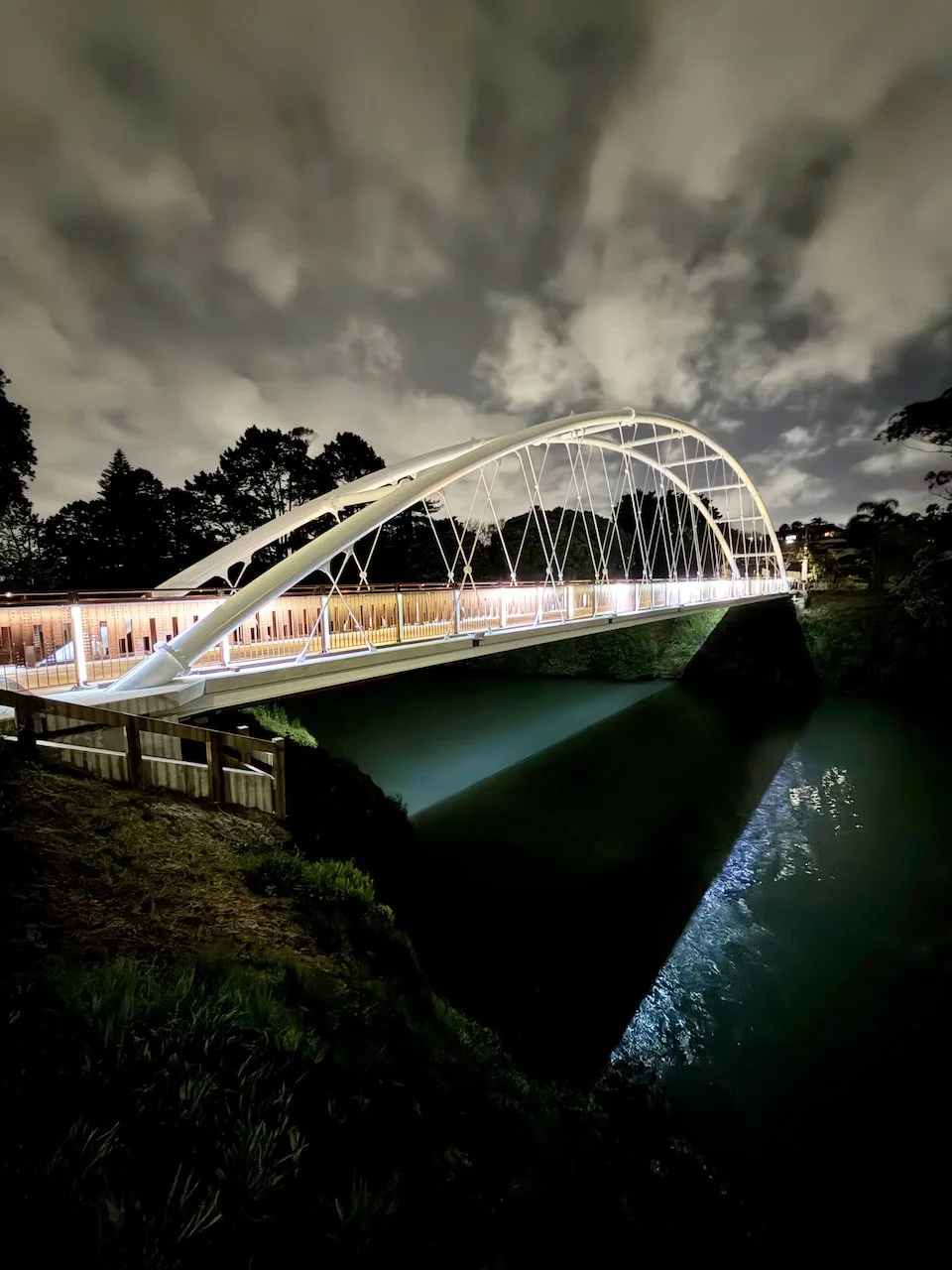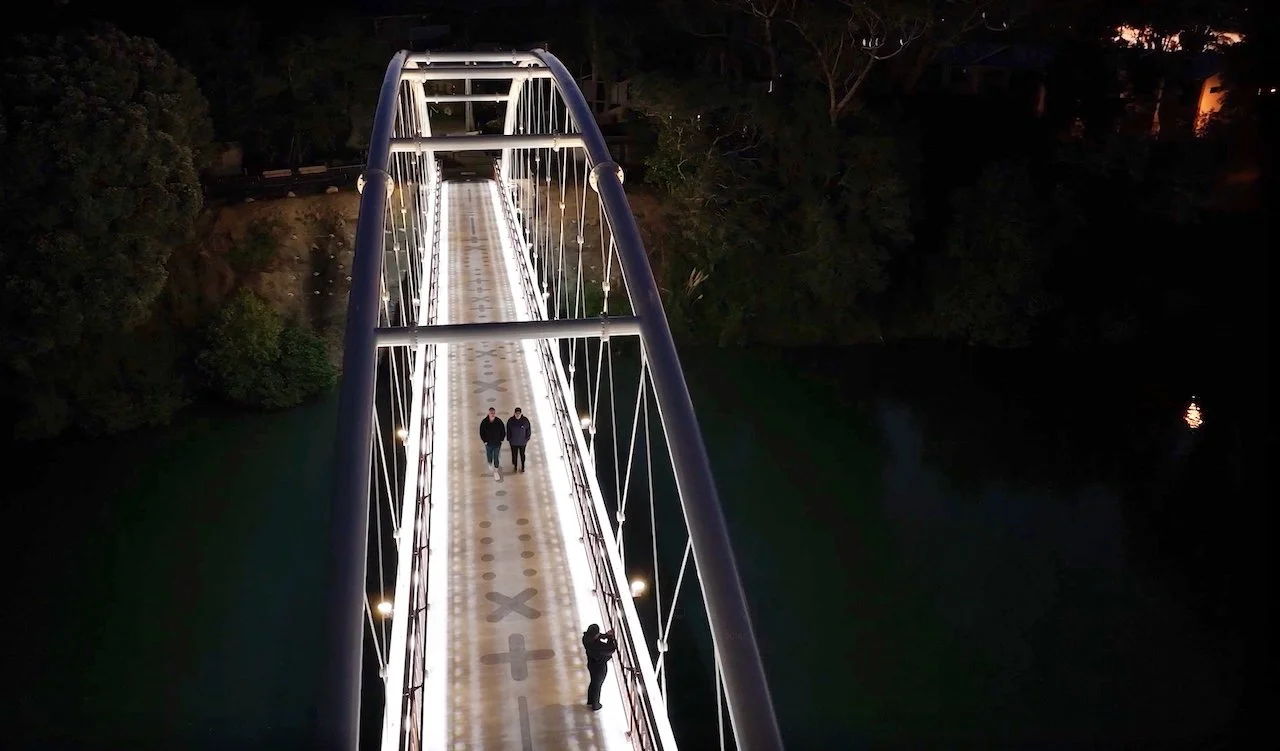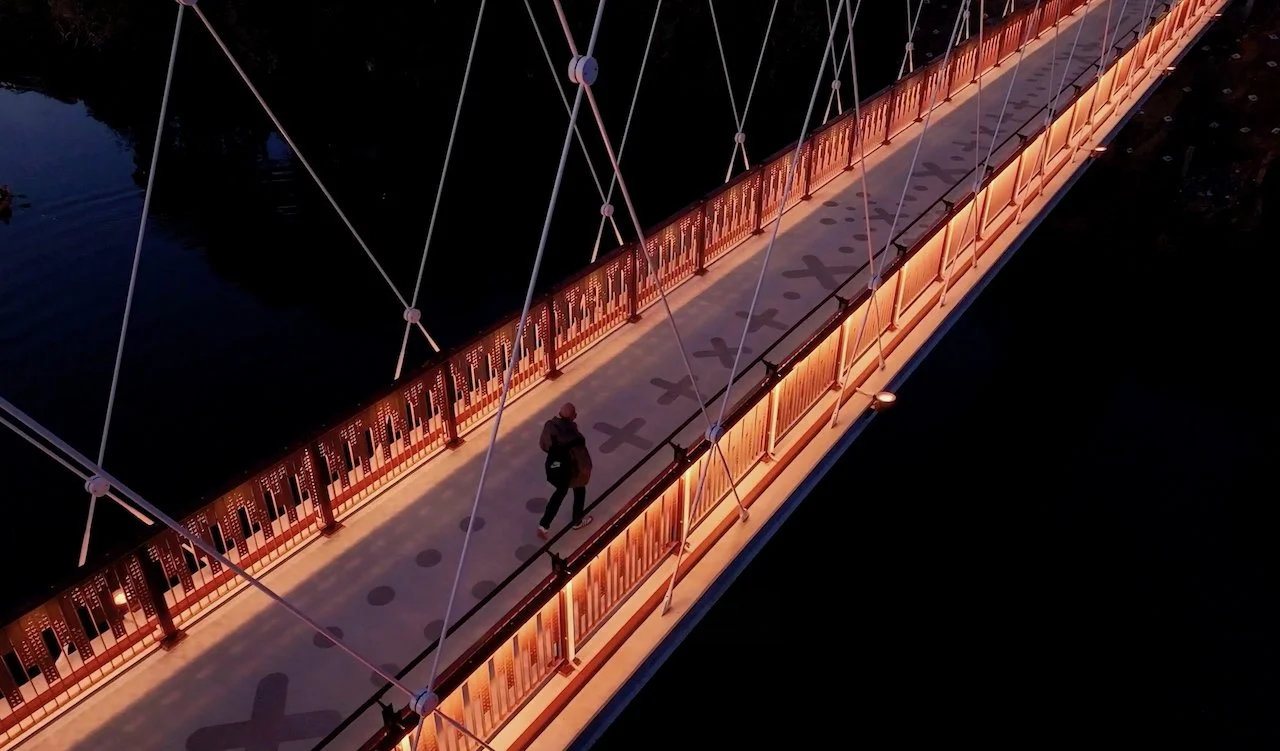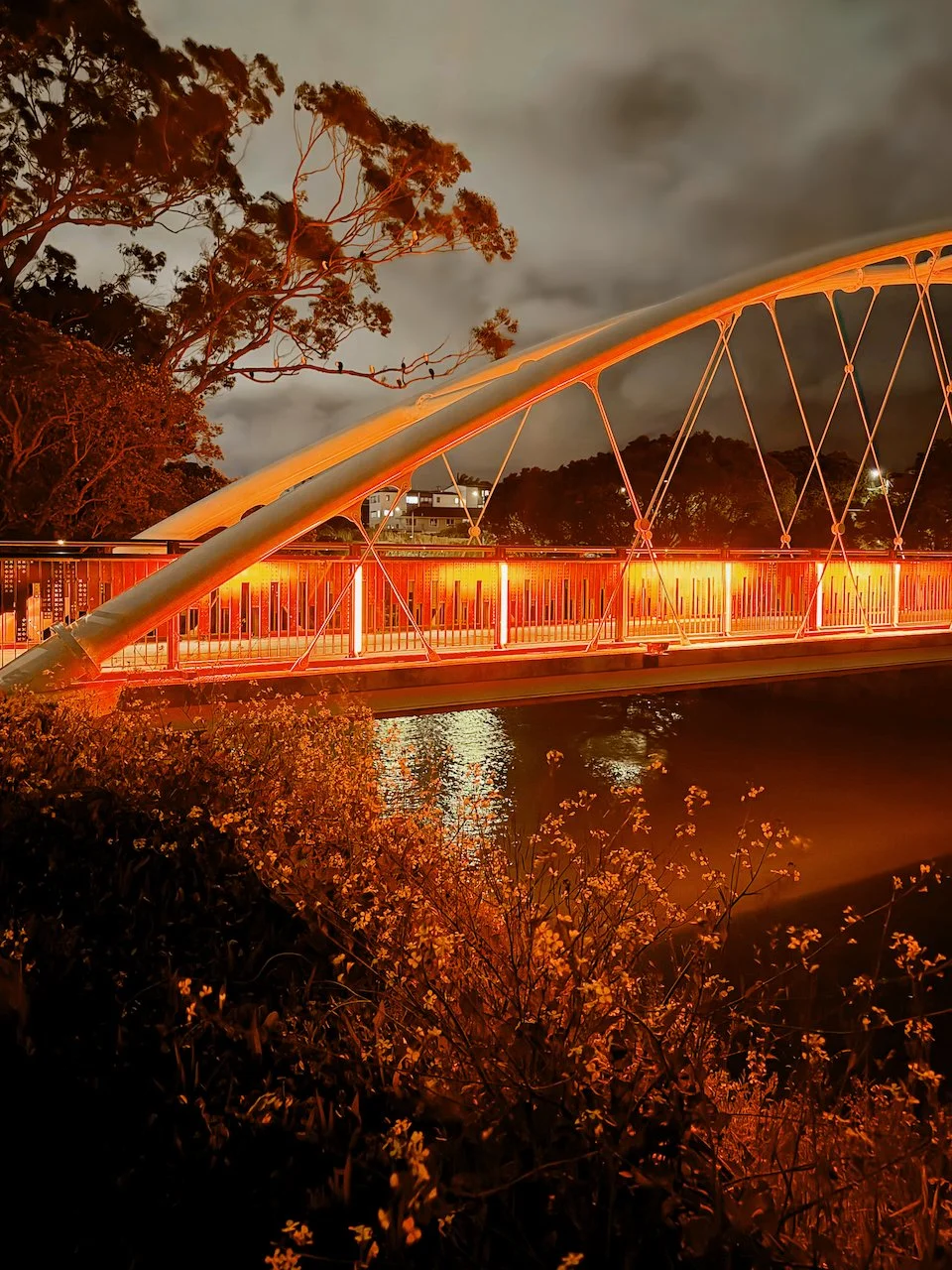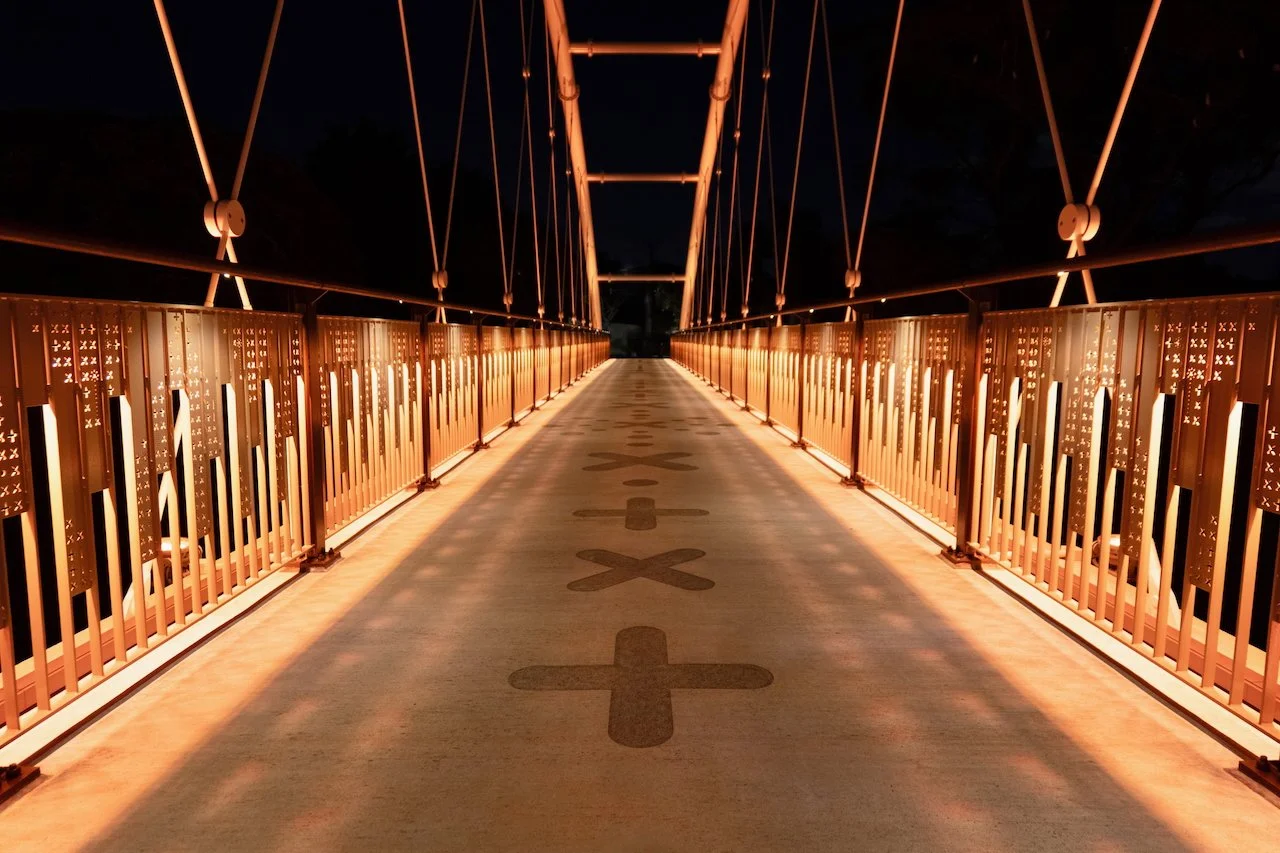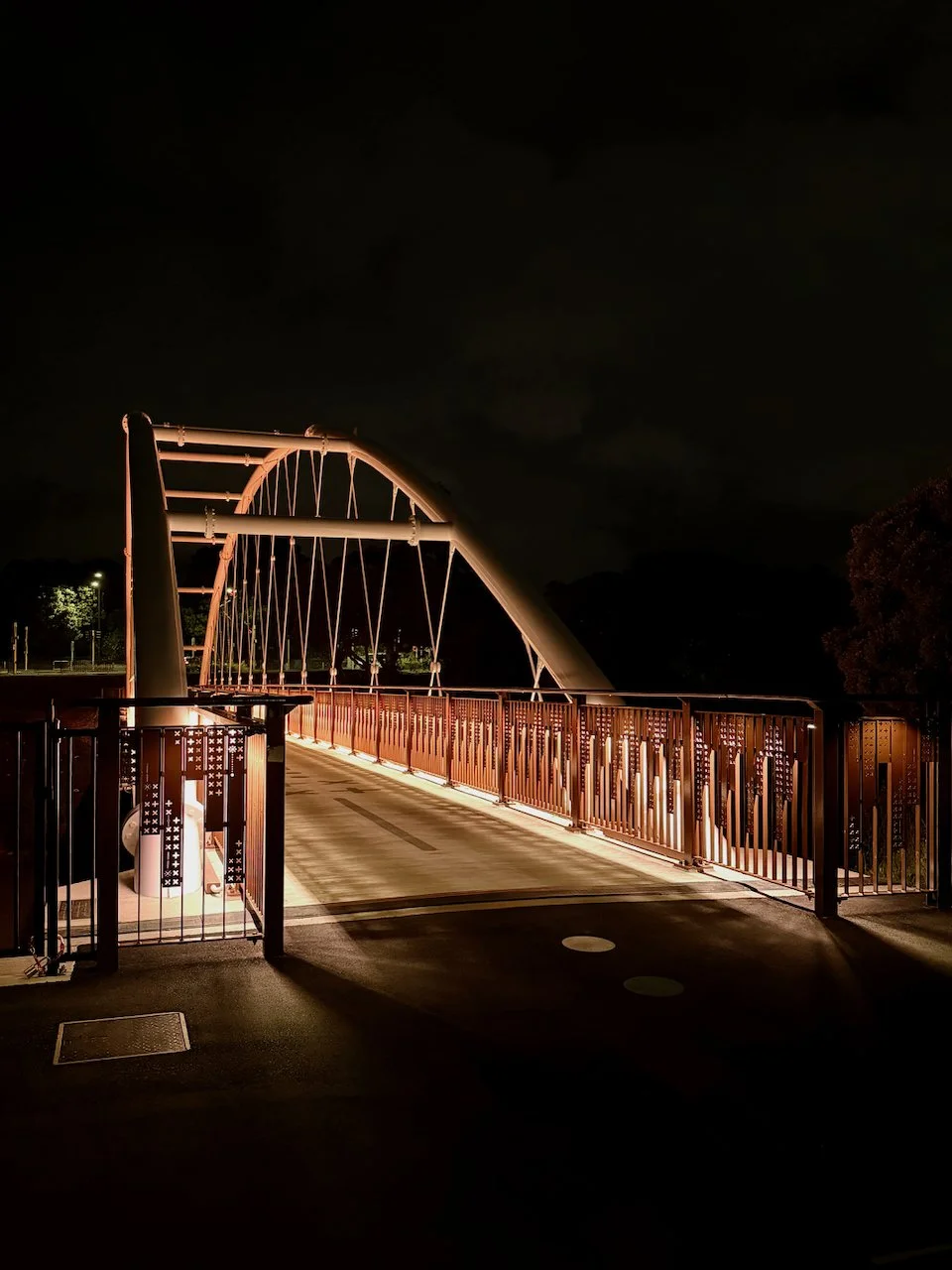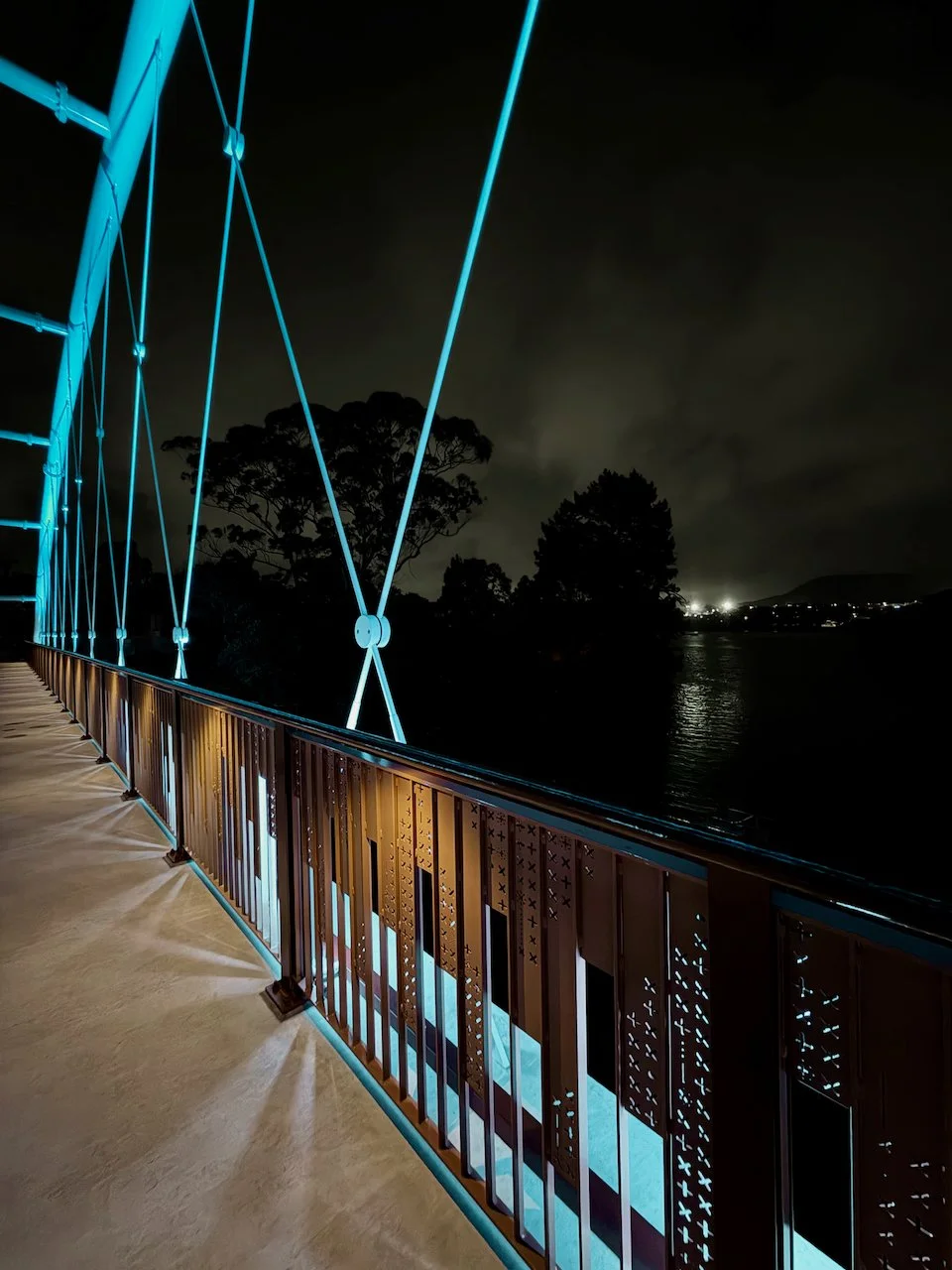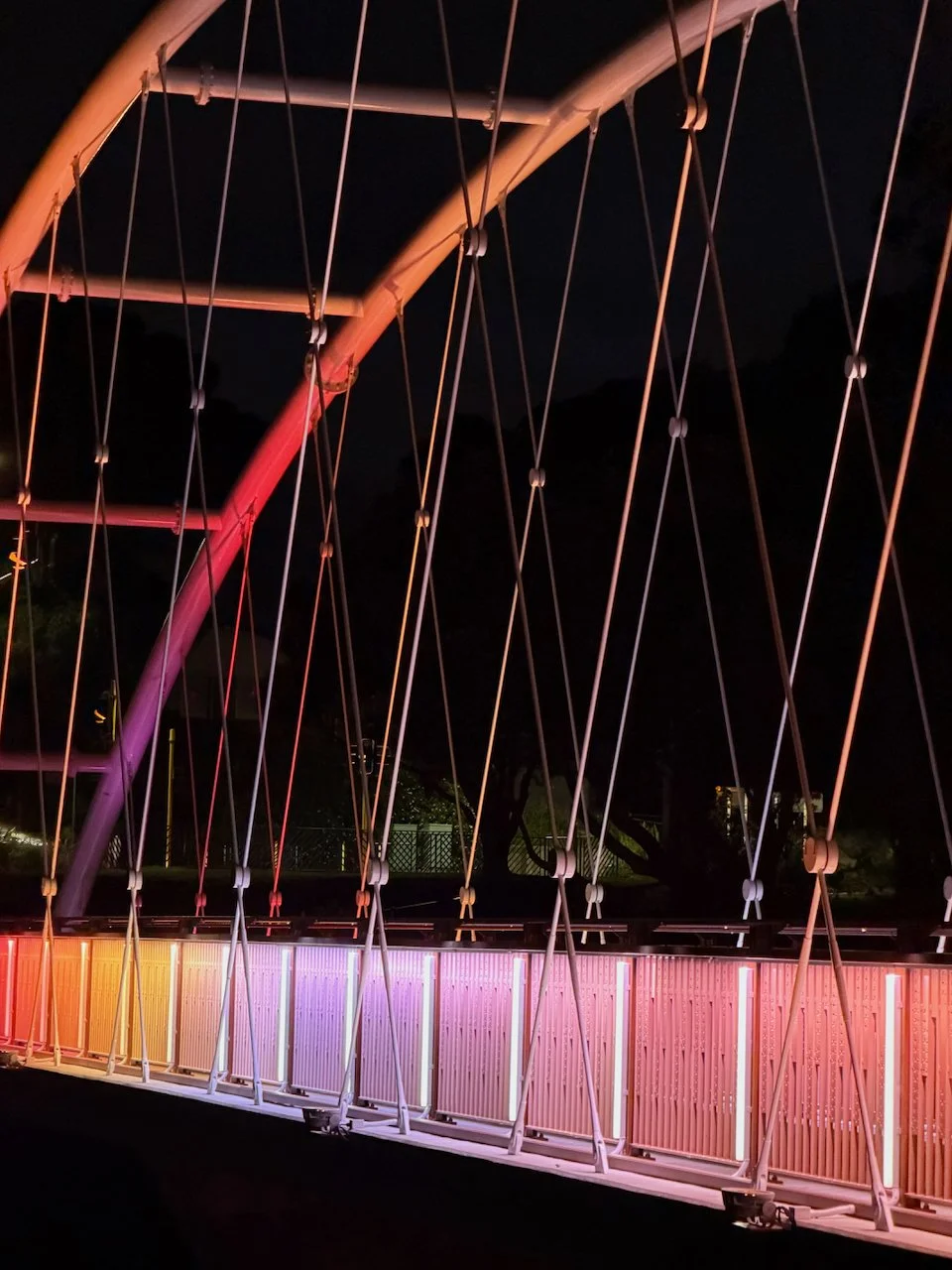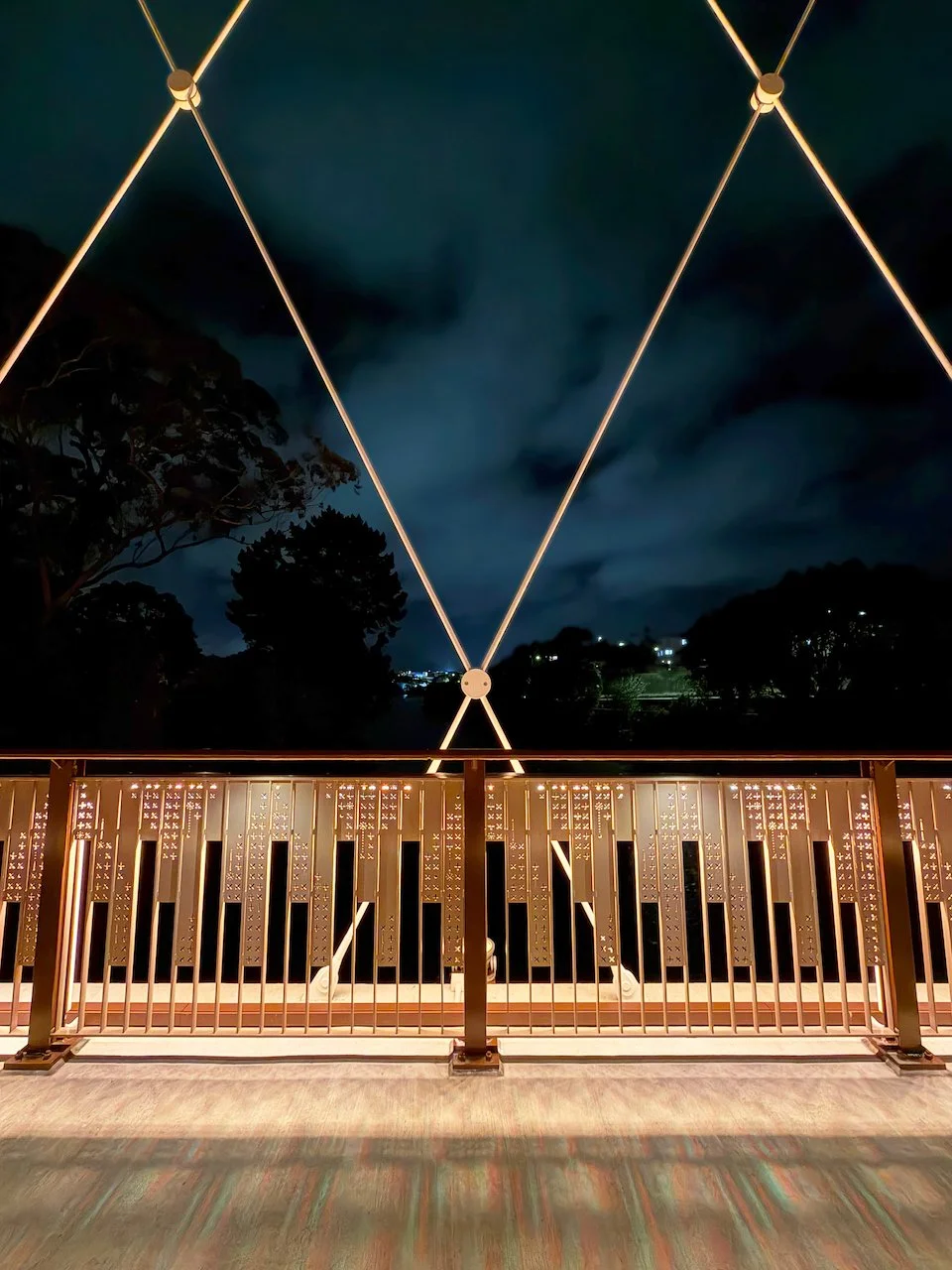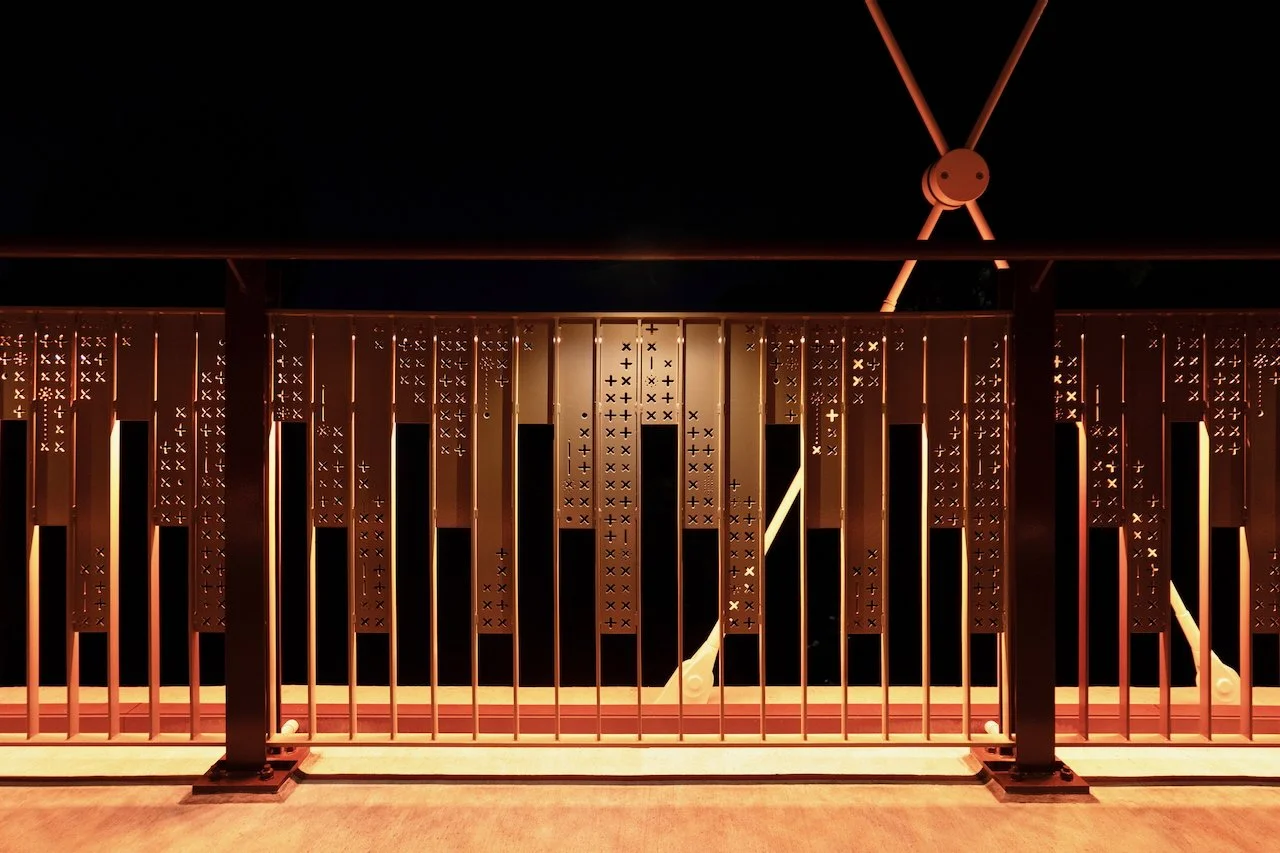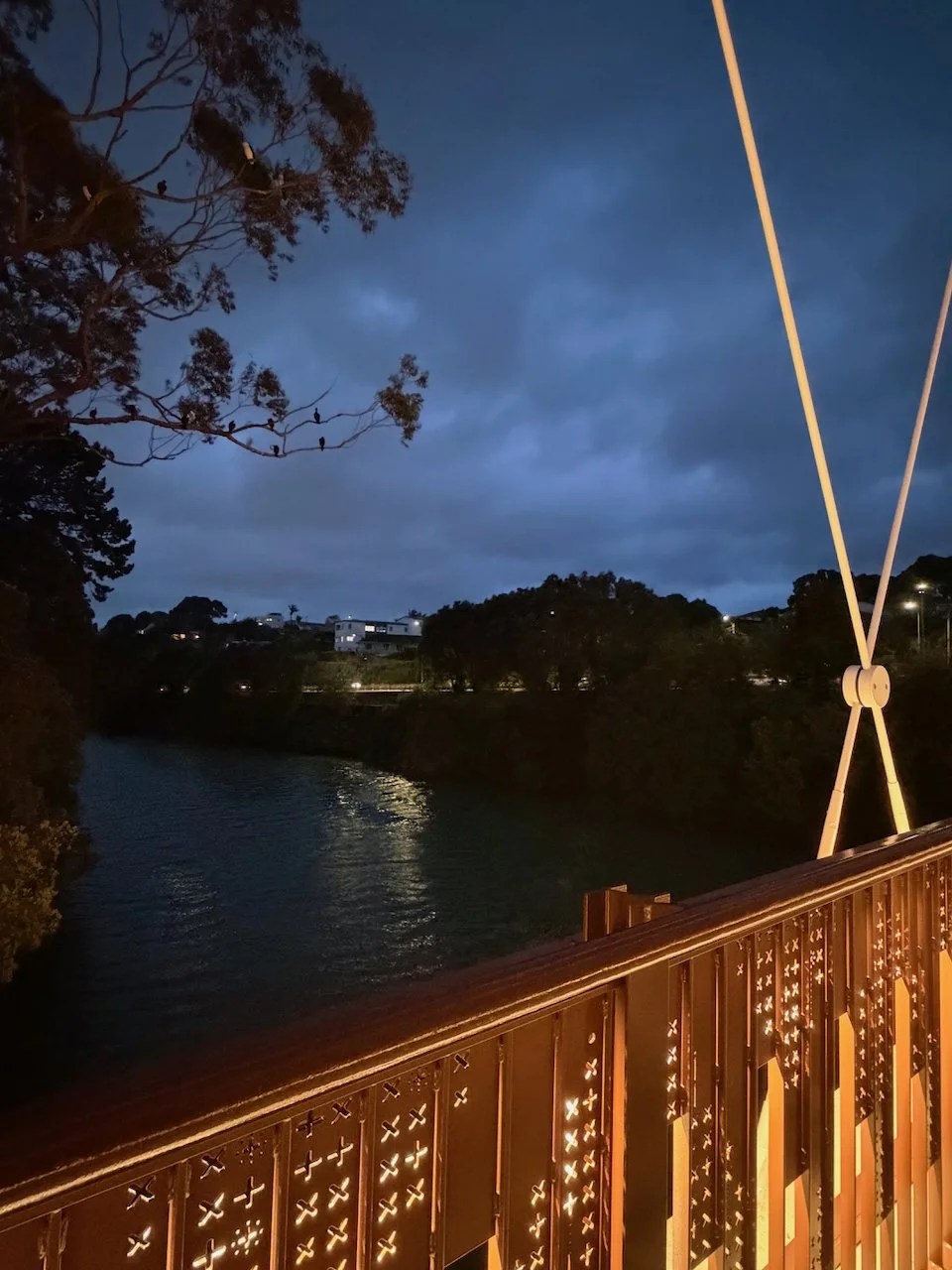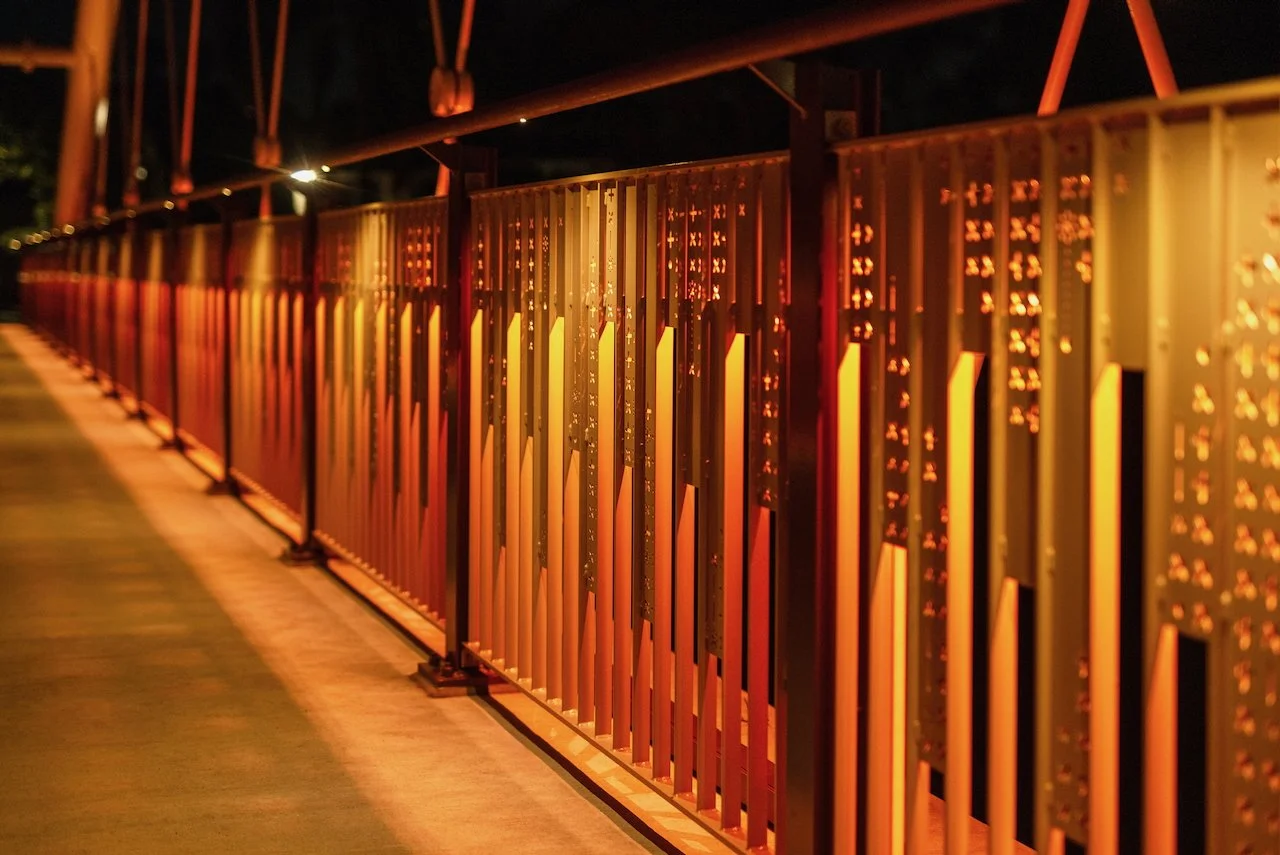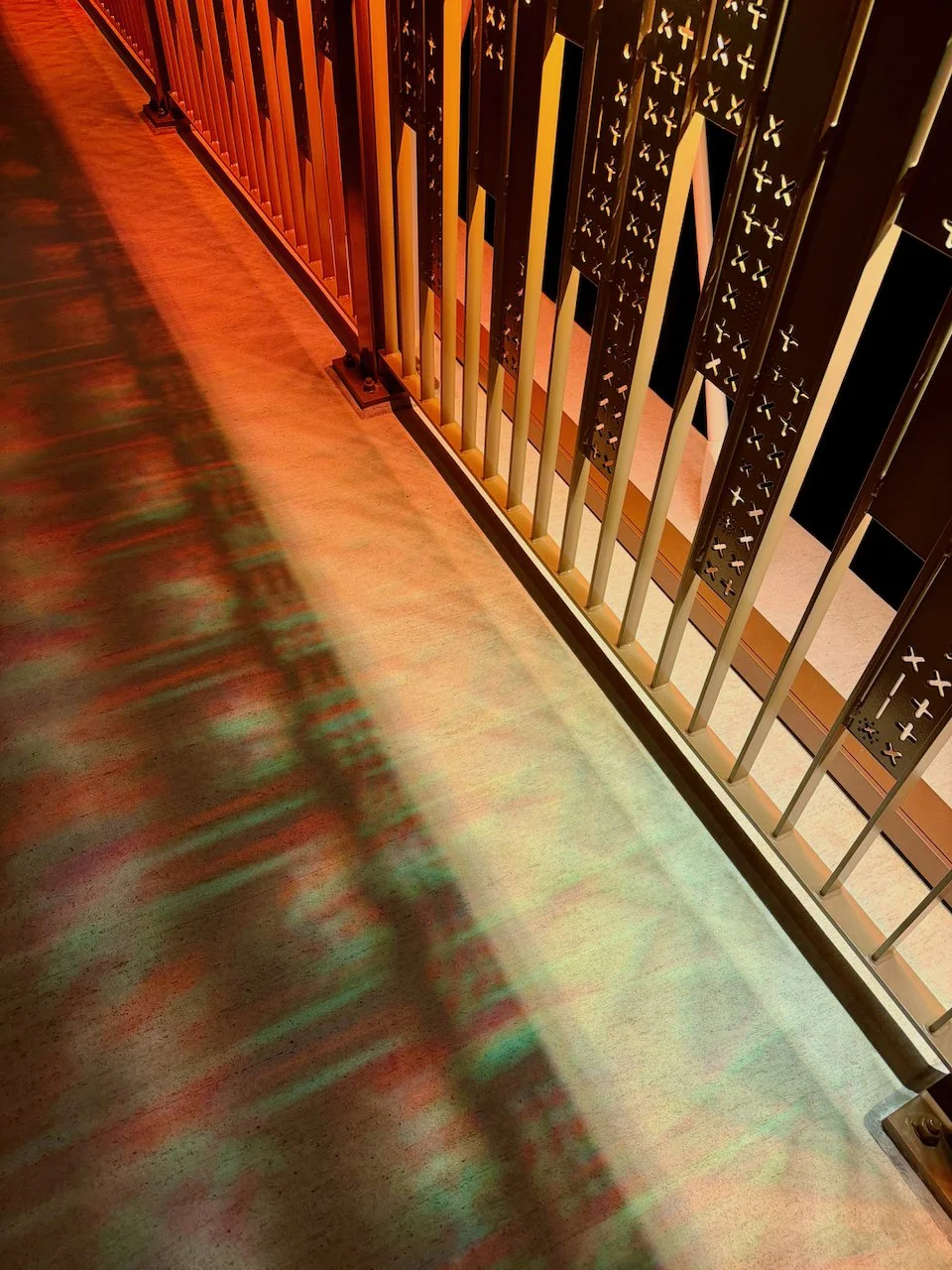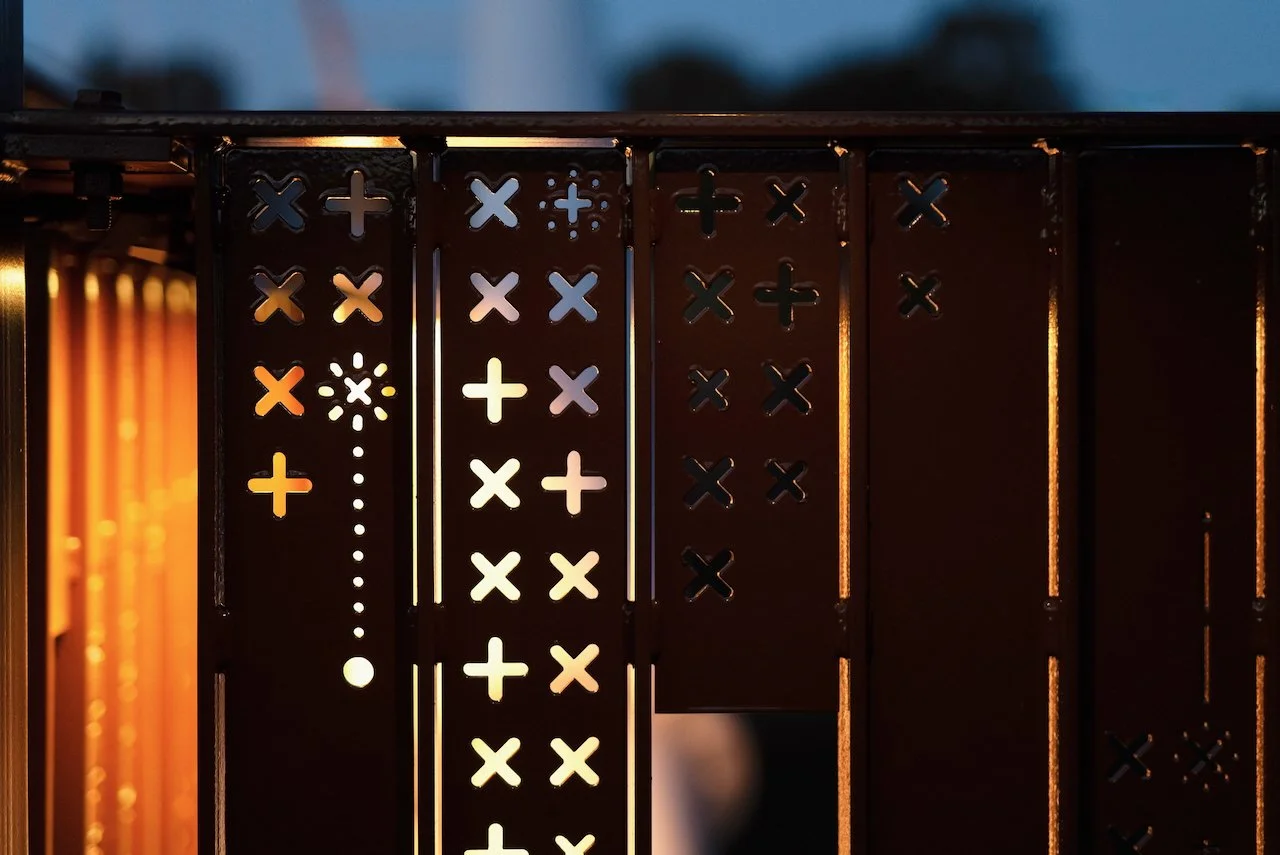Te Kōpua o Hiku
Panmure, Auckland, New Zealand, 2025
Photography: Jay Farnworth and Bryan Lowe
Videography: Jay Farnworth
Te Kōpua o Hiku is a collaborative public artwork between Shannon Novak (Tarara) and Janine Williams (Ngāti Pāoa, Ngāti Whātua ki Kaipara, Ngāti Mahuta), commissioned by Auckland Council. The artwork takes the form of a bridge connecting two sides of the lagoon in Panmure Basin. Gifted by Ngāti Paoa, the bridge’s name is Te Kōpua o Hiku. The story behind the name is shared by Drina Paratene: “Te Kōpua o Hiku means The Deep Pool of Hiku, referring to the deep pool beneath the bridge. The pool was once occupied by Moko-ika-hiku-waru, the lizard-fish with eight tails who is the kaitiaki taniwha of the people of Ngāti Pāoa”.
Novak and Williams developed a bi-cultural form of symbolism on the bridge deck and balustrades. Combining forms and shapes of Māori and Croatian descent, the pair infused iconography of protection and belonging. In Croatian history, markings on the fingers and hands of women and children were sometimes applied during war times to protect them from invading forces. Both cultures have histories where iconography - tā moko in Aotearoa - signifies belonging. There was a unique relationship struck between Māori and Dalmatian immigrants during the nineteenth century when working together in the kauri gum fields of the Far North, New Zealand. It was a relationship marked by mutual respect and resulted in the nickname “Tarara” in reference to the fast-speaking Croatians.
Data-driven lighting was developed for Te Kōpua o Hiku by Novak and Williams, with support from lighting designer Morgann Le Bars of Norwich Group and David Hayes of iion. The lighting is programmed to spotlight the arches and balustrades of the bridge, and with a weather station installed on-site, data from the prevailing wind is collected in real time and converted into a pattern of light pulsing with life across the bridge. The ‘breathing’ of the wind shown in the lighting is a metaphor for the breath of the local tupuna (ancestors), kaitiaki taniwha, and Aucklanders and visitors who enjoy the area.
